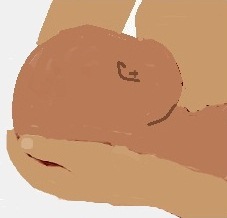
| ||
|
| ||
How Long to BreastfeedFactors that Increase Breastfeeding Duration  How long should you breastfeed? There is no one right answer, but the recommendation of AAP is 12 months. Below we list 12 important factors that have been proven to increase breastfeeding duration. How Long Should You Breastfeed?Intended Length of Breastfeeding - Cultural NormsOne of the most significant factors on the duration of breastfeeding is the length of time the mother intends to nurse. In most cultures, there is a social norm regarding how long most infants nurse. Interestingly, in our culture, which is largely unsupportive of breastfeeding, such a social norm does NOT exist.The majority of new mothers do initiate breastfeeding in the first few days after birth, but most terminate nursing in the first eight to twelve weeks. This reflects the fact that our society recognizes the value of breastfeeding scientifically, yet is non-committal to it. So how long should a mother expect to nurse her baby? AAP - 6 Months ExclusiveThe American Academy of Pediatrics recommends only human milk for the first six months. Most allergies develop in the first six months of life, so exclusive breastfeeding is a major advantage for our immune systems.Exclusive breastfeeding refers to giving an infant only human milk. No formula, no baby food, no water is given. The water, of course, is not going to cause allergies, and often water may be given in hot weather for an older baby. But for a newborn in the first few days of life, even supplemental water can cause nipple confusion and a reduction in breastmilk production. (If the baby's tummy is full of water, she is going to skip a milk feeding.) Breast Milk for 12 MonthsMany pediatricians advise at least twelve months of breastfeeding. Cow's milk is not advised until the first birthday, and pediatricians recommend formula if human milk is discontinued before then.This recommendation to nurse for twelve months is based on the recognition that, not only are breastfed infants healthier, but formula-fed infants are often sicker. Therefore some recommend at least 12 months of breastfeeding until cow's milk can be consumed. Self-WeaningOthers take the pragmatic position of allowing the child to initiate weaning. Mothers who have successfully nursed will often talk about the fact that their child indicated when they were done nursing. Some infants have indicated a readiness to wean as early as six months, while others have continued to nurse for two years or more.Factors that Increase Breastfeeding DurationThere are 12 factors that have been demonstrated by research to increase the duration that a mother breastfeeds her baby.Mother's PlanIt is beneficial for the expectant mother to consider how long she intends to nurse. Mothers who intend to nurse for a specific period are usually more motivated to work past the problems that may surface due to the breastfeeding hindrances that most babies are exposed to in the hospital. If the mother has not intended to nurse for any particular duration, it is more likely that she will give up if such problems do arise.Maternal ConfidenceAnother important factor that increases the duration of breastfeeding is maternal confidence. It makes sense that the more confident the mother is, the greater the likelihood of her continuing to nurse. What may be a little harder to directly measure, is what increases or decreases her confidence.Social SupportSocial support refers to network of relatives, friends, neighbors, co-workers (in short - everyone who sees the mother) and the positive or negative effect they have.It is logical to expect that emotional support from a social network of mothers who have successfully breastfed would enhance confidence. Friends and relatives who have breastfed and see it as normal, and natural will automatically diffuse that belief. And, if discouragements or difficulties arise, they may be a source of problem-solving. Breastfeeding Education in PregnancyOne study indicated that the single most important hospital factor to influence breastfeeding duration was education. In the study, the education was antenatal classes. Again, it is probably that the educational experience increased maternal confidence; while simultaneously it is possible that women willing to attend a class are more likely to be self-motivated and perhaps have more social support encouraging them to attend. Thus the factors of motivation, education, support and confidence are likely intertwined.If a mother is lacking in any of these four areas (motivation, education, social support, personal confidence) education is the most concrete assistance to provide to her. It is logical to anticipate that pursuing breastfeeding education will also strengthen the other three areas as well. Education After ChildbirthEducation regarding breastfeeding should not be confined to antenatal classes and literature given at the time of birth. These are valuable, but it may be anticipated that postnatal education may further increase breastfeeding duration. Considering the amount of information a family is taking in through childbirth classes, antenatal breastfeeding classes, and at the time of hospitalization, it is highly probable that a significant amount of that information has not been internalized.As a matter of course, women should contemplate increasing their breastfeeding knowledge through education at four to six weeks. When a mother is four weeks postpartum, and the scenarios of her pregnancy and birth are receding, breastfeeding education can confirm what she has learned and give her new strategies as well. This postpartum education can come from support groups such as La Leche, from videos, or from books. Peer CounseslingPeer counseling is another factor that increases breastfeeding success and duration. The availability of peer counselor support and breastfeeding videos has been shown to increase duration among minorities that typically have a lower rate of breastfeeding.Physician and Clinician SupportAnother significant factor influencing breastfeeding success is the support of health care providers. Health care professionals can support breastfeeding by encouraging expectant mothers to breastfeed, avoiding distribution of formula samples and literature, and providing support and education if a woman encounters difficulties.Interestingly, in our society that has a medical specialist for virtually every organ and every disease, there are no breastfeeding specialty programs within the physician community, and instruction on the lactation process is not covered in medical school. Obstetricians consider infant feeding the domain of pediatricians. Pediatricians consider female breasts the domain of obstetricians. Family practitioners are likely to support or not support breastfeeding based on their personal, family experience. In other words, those that nursed their young, or their wives did, support nursing. If they chose not to, they do not support it. A breastfeeding friendly family nurse practitioner discussed one typical encounter with a pediatrician. While doing a pediatric orientation, she met a young nursing mother who was experiencing problems. As she began counseling the mother regarding the issue, the pediatrician told her she was not allowed to discuss it in that practice. She then proceeded to refer the mother to the hospital lactation consultants, but was told that it was not a pediatric issue and she was not allowed to give that recommendation. What is disheartening about this incident was not that the physician would not support breastfeeding, as that is altogether too typical. But in this case, a pediatric practice that is considered amongst the most supportive of breastfeeding in the area, refused to allow a nurse practitioner, who had undertaken additional lactation education, from providing the most simple information to a vulnerable family. “Just supplement with formula,” is all clinicians have time to say. Lack of clinical time has been identified as a barrier to support of breastfeeding. “It’s not my issue, it’s someone else’s,” becomes a convenient excuse. Believe me, I realize as a busy clinician who hard it is to find time to deal with all questions on breastfeeding. But I do find the time to ask every expectant mother if she is planning to breastfeed, and refer her to the local lactation program in the literature we give her. If a clinician cannot take 20 seconds to do that much, they really do not support breastfeeding. Avoid Formula SamplesA common behavior of healthcare professionals that is highly indicative of breastfeeding termination is advising the mother to add supplemental formula. The addition of supplemental formula itself decreases the duration of time the infant nurses, as well as decreasing the quantity of human milk received prior to termination. In addition, the advice to supplement usually decreases confidence, which has already been shown to be an important factor in the length of nursing. It also indicates to the mother that nursing is not important, otherwise health care workers would support it.Mothers can increase their breastfeeding success by finding care givers who support nursing. If they are advised to supplement, they are more apt to continue breastfeeding if they contact a lactation consultant or other breastfeeding advocate who can assist them with any problems, and possibly refer them to a physician who is breastfeeding friendly. Breastfeed ExclusivelyExclusive breastfeeding also impacts the duration. Formula decreases the amount of breast milk made by more than the amount of formula consumed.If an infant drinks 4 oz of formula, the mother will probably produce 5 or 6 oz less milk. The corollary to the principle “The more you nurse, the more milk you make” is “The more you supplement, the less you make.” This puts the breastfeeding process into the negative cycle. Separation of Mother and BabyIf the mother returns to work or school, the duration of breastfeeding is also reduced. It is understood that the economic environment today makes it more difficult for women to stay home with their infants.Twenty-five years ago the career-minded professional woman was more likely to return to work than her blue collar counterpart. Today, that trend has been reversed, and it is often the professional woman that may have the means to stay home, while families with less education and lower incomes have a decreased ability to exercise that option. One mother who had a low paying job at a grocery store to make ends meet remarked about the irony of having to pay so much for expensive formula because she needed the money for food, but could not stay home and nurse her baby for free. This is a difficult situation with no easy answers. Some have found creative solutions by finding flexible employers who have baby-friendly policies, job sharing, or working at home. Flexible options DO exist, though they may not be readily available to all women. DepressionMaternal depression has a negative effect on duration. Clinical depression has a motivation-reducing impact; and breastfeeding may take more motivation than a woman suffering from depression may have. This can produce a negative feedback loop for the depressive symptoms: the depression causes termination of breastfeeding, which increases lack of confidence, and increases depression.Sleeping ArrangementsFinally, sleeping arrangements impact breastfeeding duration. A woman is more apt to continue breastfeeding if she sleeps with the infant. One study indicated that 97% of infants who were breastfed at three months of age were fed in their mother’s bed at nighttime. Other studies have also shown a correlation between breastfeeding and bed sharing. Understandably, a mother is more apt to discontinue breastfeeding if she needs to get up out of bed for the nightly feedings.Some health care providers discourage the practice of bedsharing due to concerns of infant suffocation. However, it is understandable that the simpler the breastfeeding arrangement is for nighttime feedings, the longer they will occur. Families can look for safe, proximal sleeping arrangements. That means the infant is close at hand, but actually lying on a surface that is made to be baby-safe. That may include having the crib next to the bed, using a co-sleeper (which attaches to the bed), using a basinet, or ensuring that the parent bed is made infant-safe. Better Childbirth Outcomes HOME PAGE. | ||
| | ||
|
By Karen Newell Copyright 2003 - 2012 Better Childbirth Outcomes - All Rights Reserved
Camp Hill, Pennsylvania, USA | ||